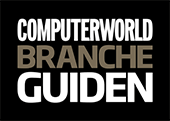Læs også:
Offentligheden må intet vide: Danskere forhandler om nettets fremtid
Fire danskere skal stemme om internettets fremtid
Måske kan du se frem til endnu mere overvågning af din færden på internettet.
Den Internationale Telekommunikationsunions (ITU) har i november godkendt et forslag, der anbefaler telebranchen og andre internetansvarlige at benytte såkaldt deep packet inspection (DPI).
Ved at give tilladelse til at benytte DPI, kan internetudbydere helt nøjagtigt se, hvad du bruger din internettrafik til.
Det åbner samtidig op for at kunne gribe ind i din trafik, og eksempelvis analysere eller afvise indholdet af dine datapakker.
Mere overvågning tak
Oplysningerne strammer fra to lækkede dokumenter.
Det ene er det såkaldte Y.2770 forslag, der beskriver, hvorfor DPI er et anvendeligt værktøj for telebranchen og nationalstater.
Det andet dokument stammer angiveligt fra ITU's egen kommunikationsmedarbejder Toby Johnson, og beskriver helt konkret, hvad ITU vil bruge DPI til. Her fremgår det, at brugen strækker sig over et stort felt af services.
Her beskrives blandt andet blokering af uønskede ip-telefoni services, identifikation af BitTorrent internetbrugere, overvågning af specifikke kunders filoverførsler og identifikation af internetbrugere, der benytter sig af eDonkey filoverførsel.
Se alle eksemplerne på side to.
Uvished om forslagets fremtid
Selvom forslaget er godkendt af ITU, er der langt fra anbefaling til reel praksis. Men det er kun ITU selv ved, hvad der skal ske.
Forslaget er nemlig indtil i går hemmeligt indtil det blev lækket på internettet.
I disse dage er flere ITU forslag til afstemning ved Den Internationale Telekommunikationsunions (ITU) konference i Dubai.
Konferencen foregår fordi det internationale telekommunikationsreglement fra 1988 skal revideres. Her er Danmark repræsenteret ved fire delegerede fra Erhvervsstyrelsen.
Hvad de delegerede skal stemme om er uvist, da agendaen er hemmelig.
Læs også:
Offentligheden må intet vide: Danskere forhandler om nettets fremtid
Fire danskere skal stemme om internettets fremtid
Her er ITU's ønskeseddel
Oplysninger fra ITU's lækkede dokument, viser her eksempler på, hvad DPI kan bruges til:
- II.2.1 Example "Security check - Block SIP messages with specific content types and derive SIP device address"
- II.2.2 Example "Detection of Malware"
- II.2.3 Example "Detection of specific video format"
- II.2.4 Example "Detection of File Transfer in general"
- II.3 Example policy rules for Application-dependent, Flow-dependent DPI - Identification order "1st Flow, 2nd Application"
- II.3.1 Example "Security check - Process SIP messages (from a particular user) with specific content types - User identification via flow information"
- II.3.2 Example "Application-specific traffic policing"
- II.3.3 Example "Business Card (vCard) application - Correlate Employee with Organization"
- II.3.4 Example "Forwarding copy right protected audio content"
- II.3.5 Example "Measurement-based traffic control"
- II.3.6 Example "Detection of a specific transferred file from a particular user"
- II.4 Example policy rules for Application-dependent, Flow-independent DPI
- II.4.1 Example "Security check - Block SIP messages (from a particular user) with specific content types - User identification via application information"
- II.4.2 Example "Security check - Block SIP messages (across entire SIP traffic) with specific content types"
- II.4.3 Example "Checking resource locators in SIP messages"
- II.4.4 Example "Deletion of a particular audio channel in a multi-channel media application"
- II.4.5 Example "Identify particular host by evaluating all RTCP SDES packets"
- II.4.6 Example "Measure spanish Jabber traffic"
- II.4.7 Example "Blocking of dedicated games"
- II.4.8 Example "Statistics about Operating Systems of game consoles"
- II.4.9 Example "Measure abnormal traffic with respect to packet sizes"
- II.4.10 Example "Detect abnormal MIME attachments in multiple application protocols"
- II.4.11 Example "Identify uploading BitTorrent users"
- II.4.12 Example "Measure BitTorrent traffic"
- II.4.13 Example "Blocking Peer-to-Peer VoIP telephony with proprietary end-to-end application control protocols"
- II.4.14 Example "Specific handling of old IP packets"
- II.4.15 Example "Security check - SIP Register flood attack (using a SNORT rule)"
- II.4.16 Example "Detection of BitTorrent traffic"
- II.4.17 Example "Detection of eDonkey traffic"
- II.5 Example policy rules for mixed ("stateful") Application-dependent, Flow-independent/Flow dependent DPI
- II.5.1 Example "Detecting a specific Peer-to-Peer VoIP telephony with proprietary end-to-end application control protocols"
- II.6 Examples of multiple, different DPI policy rules for the same DPI application
- II.6.1 Example "Detection of Remote Telnet"
- II.7.1 Example for application detection without independent of flow descriptor usage or not




